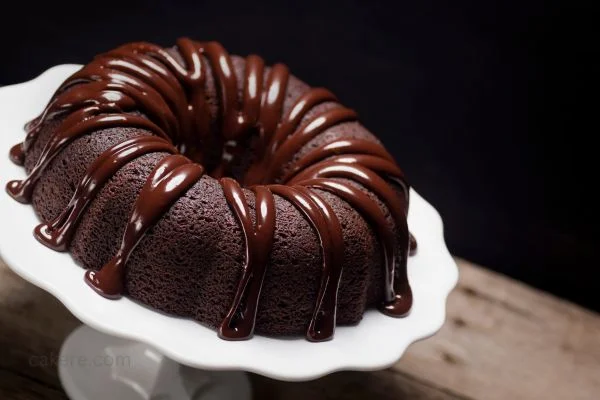Ganache is a delectable chocolate mixture commonly used in baking and cake decoration. Its smooth, glossy texture and rich flavor make it a popular choice for frosting and covering cakes. If you find yourself with leftover ganache-covered cake or want to prepare ahead for a special occasion, you may wonder if it’s possible to freeze ganache-covered cake without compromising its taste and quality.

Understanding Ganache
Before delving into the freezing process, let’s briefly understand what ganache is. Ganache is a blend of chocolate and cream, creating a velvety and luscious mixture.
It can be made with different types of chocolate, such as dark, milk, or white, depending on the desired flavor and sweetness. Ganache can be used as a filling, icing, or glaze for cakes, pastries, and other desserts.
Freezing Ganache-Covered Cake
Freezing ganache-covered cake is possible and can help preserve its freshness and taste. However, there are a few considerations to keep in mind to ensure the best results. Here are the steps to follow when freezing a ganache-covered cake:
- Preparation: Before freezing, make sure the ganache has fully set and hardened on the cake. This ensures that the ganache maintains its shape and doesn’t become messy during the freezing and thawing process.
- Wrapping: Wrap the entire ganache-covered cake tightly with plastic wrap. Ensure that all exposed surfaces, including the top, sides, and bottom, are well-covered. The plastic wrap creates a protective barrier against moisture and freezer odors.
- Double Protection: For an extra layer of protection, place the wrapped ganache-covered cake in a freezer-safe container or resealable plastic bag. This further prevents the cake from absorbing unwanted flavors and helps maintain its quality.
- Labeling: Don’t forget to label the container or bag with the date of freezing. This will help you keep track of the cake’s freshness and ensure you use it within the recommended timeframe.
Thawing Ganache-Covered Cake
When the time comes to enjoy your frozen ganache-covered cake, proper thawing is essential to maintain its taste and texture. Follow these steps for thawing:
- Transfer: Remove the ganache-covered cake from the freezer and unwrap it. Place it on a plate or cake stand to thaw.
- Refrigerator Thawing: The best method for thawing a ganache-covered cake is to transfer it to the refrigerator. Allow the cake to thaw gradually in the refrigerator for several hours or overnight. This slow thawing process helps prevent condensation and preserves the cake’s quality.
- Room Temperature Thawing: If you’re short on time, you can also thaw the cake at room temperature. Keep in mind that this method may result in some condensation, so it’s essential to remove the plastic wrap after transferring the cake to room temperature. Allow the ganache-covered cake to thaw for a few hours until it reaches a soft and edible state.
- Ganache Softening: After thawing, you may notice that the ganache has become firm or slightly hardened. To restore its smooth and creamy texture, gently rub the surface of the ganache with a warm spatula or a piece of smooth cloth. This process will help soften the ganache and bring back its original glossy appearance.
Tips for Freezing and Thawing Ganache-Covered Cake
To ensure the best results when freezing and thawing ganache-covered cake, consider the following tips:
- Freshness: It’s recommended to freeze the ganache-covered cake as soon as possible after it has been prepared. This helps preserve its freshness and taste.
- Quality Ingredients: Using high-quality ingredients for both the ganache and cake layers will contribute to better results when freezing and thawing. Opt for good-quality chocolate and fresh ingredients to maintain the cake’s overall flavor and texture.
- Proper Storage Containers: Choose freezer-safe containers or resealable bags that are airtight and moisture-resistant. This prevents the cake from absorbing unwanted odors or flavors from the freezer.
- Avoid Freezer Burn: Make sure the ganache-covered cake is well-wrapped to prevent freezer burn. Any exposure to air can cause the cake to become dry and affect its taste.
- Consumption Timeframe: It’s recommended to consume the frozen ganache-covered cake within 2 to 3 months for the best taste and quality. Beyond this period, the texture and flavor may deteriorate.
How Long Can You Freeze Ganache-Covered Cake?
As mentioned earlier, ganache-covered cake can be safely frozen for 2 to 3 months while maintaining its taste and quality.
It’s important to adhere to this timeframe to ensure the best eating experience. Freezing the cake for longer periods may result in texture changes and a decline in overall flavor.
Serving Frozen Ganache-Covered Cake
Once the ganache-covered cake has been thawed, it’s ready to be served and enjoyed. You can serve it as is or add fresh fruits, whipped cream, or other garnishes to enhance the presentation and taste.
The thawed cake should have a soft and moist texture, with the ganache regaining its smooth and velvety consistency.
FAQs
Yes, you can freeze a cake with ganache filling. Ensure that the ganache is set and the cake is properly wrapped before freezing.
It’s best to freeze a ganache-covered cake without elaborate decorations. Delicate decorations may become damaged during the freezing and thawing process.
Freezing whipped cream can affect its texture and lead to separation. It’s not recommended to freeze a ganache-covered cake with whipped cream.
Yes, you can freeze leftover ganache for future use. Place the ganache in an airtight container or freezer bag, removing any excess air. Thaw it in the refrigerator overnight or gently warm it in the microwave or on the stovetop before using.
Conclusion
In conclusion, freezing ganache-covered cake is a viable option for preserving its taste and quality. By following the proper freezing and thawing methods outlined in this article, you can enjoy a delicious ganache-covered cake even after it has been stored in the freezer. Remember to use high-quality ingredients, wrap the cake securely, and consume it within the recommended timeframe for the best results.
